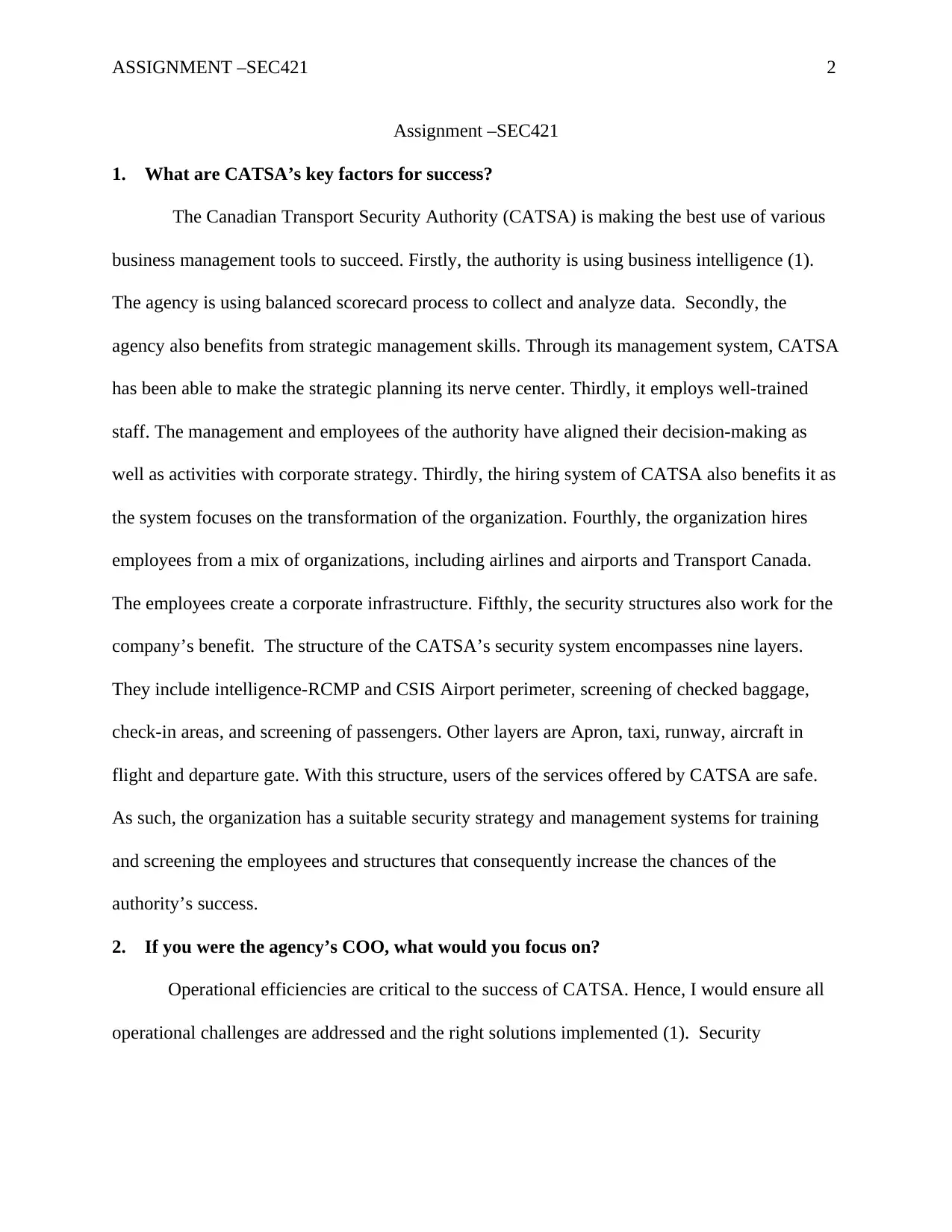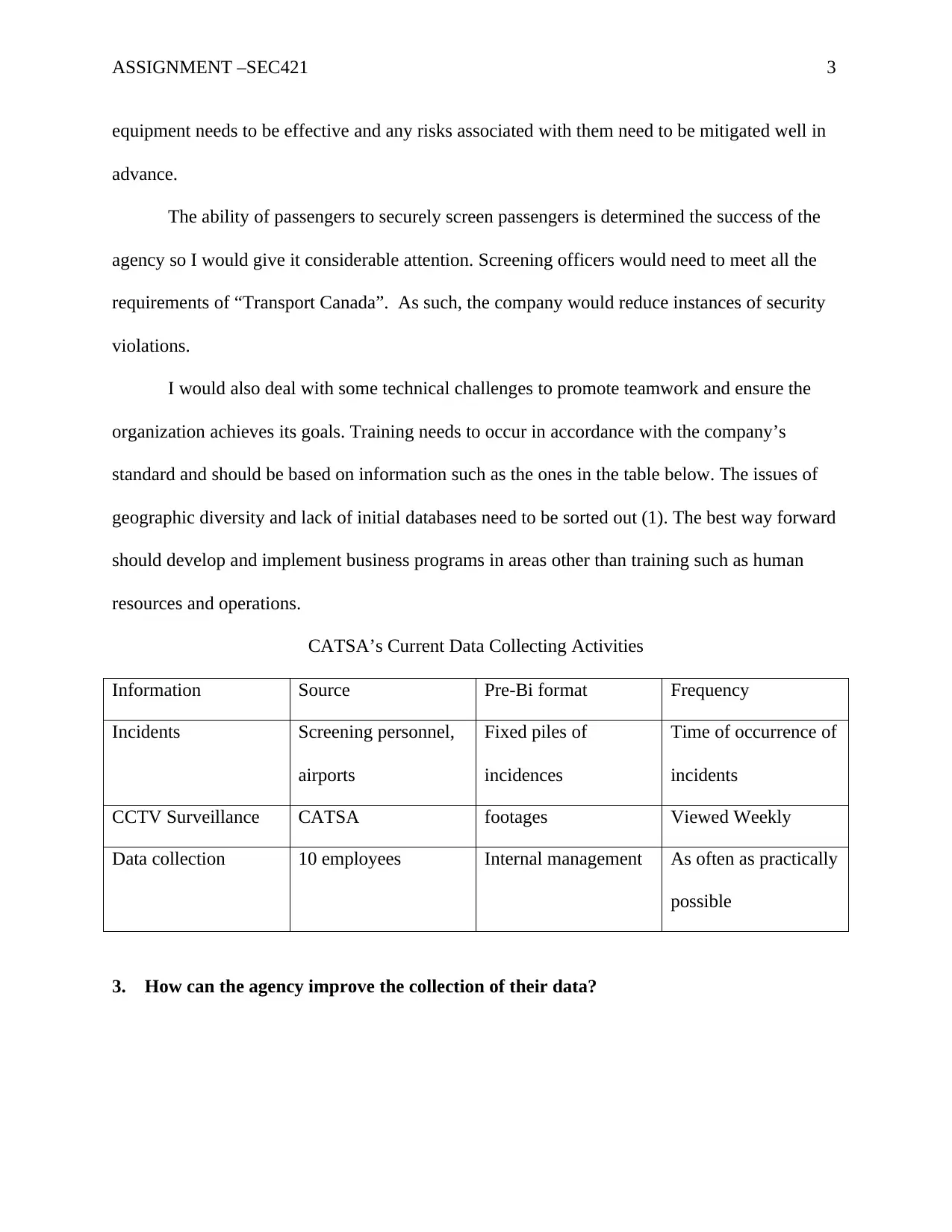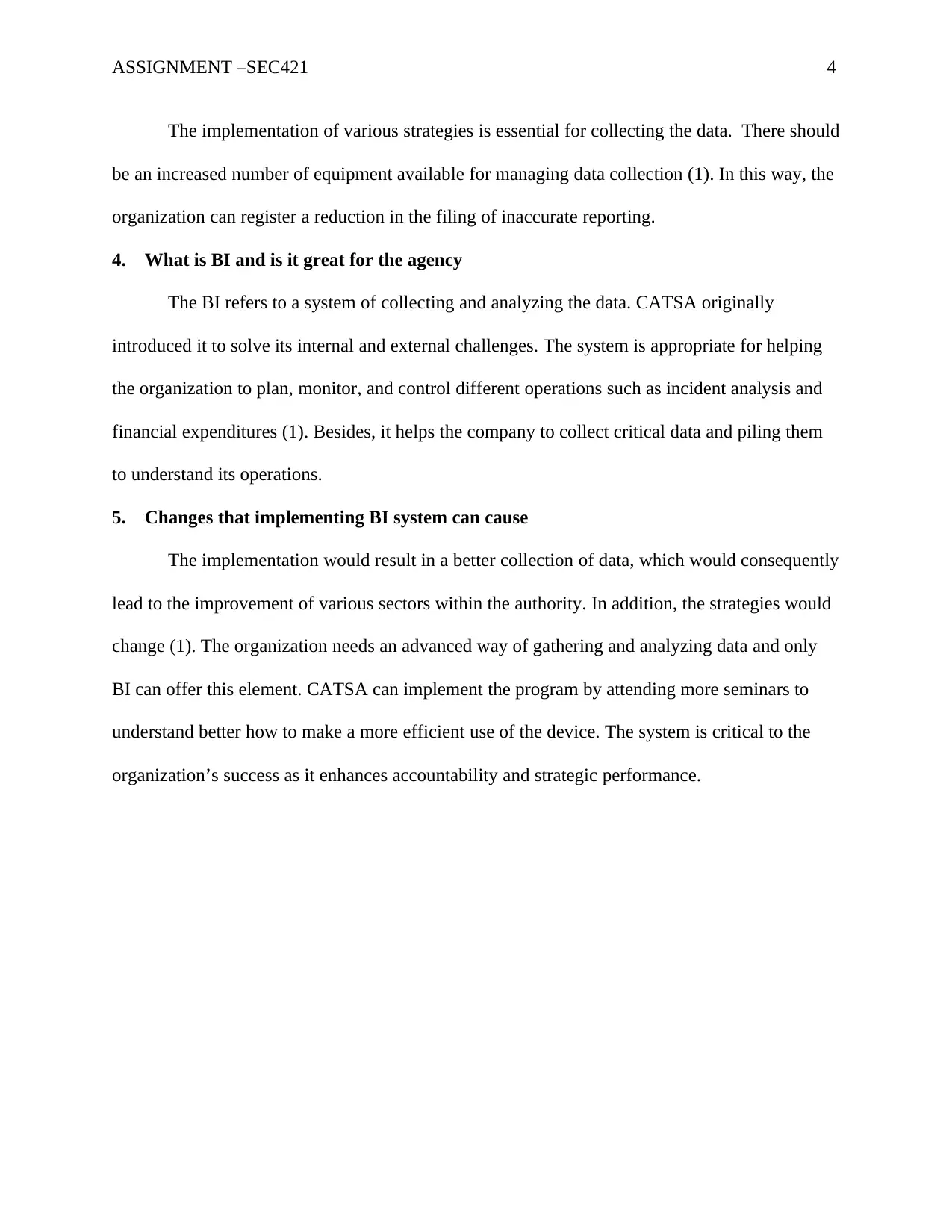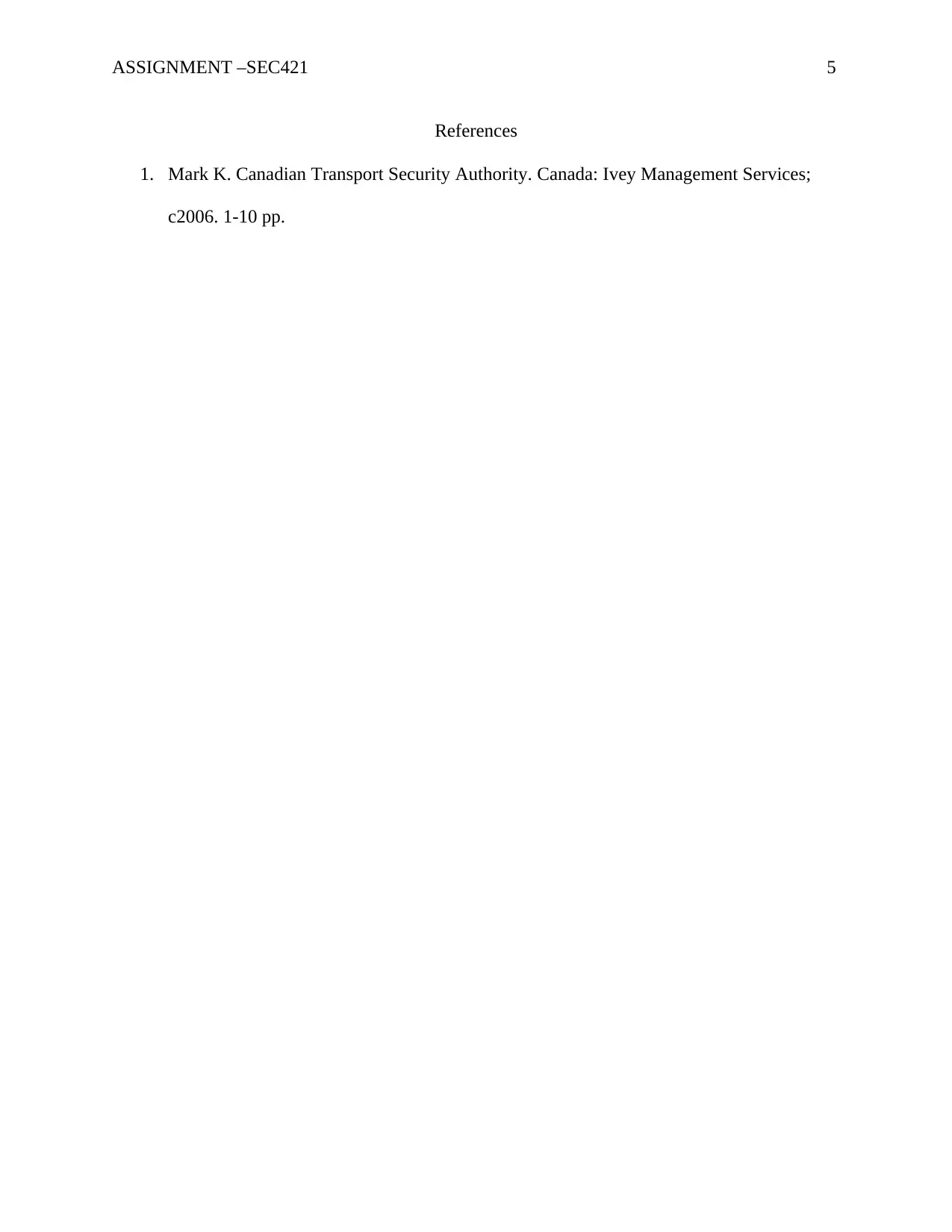SEC421: CATSA's Success Factors, BI System, and Data Collection
VerifiedAdded on 2023/06/14
|5
|815
|445
Case Study
AI Summary
This assignment provides a solution to a case study on the Canadian Air Transport Security Authority (CATSA), focusing on the key factors contributing to its success and the implementation of a Business Intelligence (BI) system. It identifies CATSA's strengths, including the use of business intelligence, strategic management skills, well-trained staff, and a robust security structure with nine layers. The solution also addresses potential improvements, such as operational efficiencies, effective security equipment, and comprehensive training programs. Furthermore, it explores how CATSA can enhance its data collection methods and leverage the BI system to improve various sectors within the authority, ultimately enhancing accountability and strategic performance. This complete assignment is available on Desklib, where students can access a wealth of study resources and solved assignments.
1 out of 5











![[object Object]](/_next/static/media/star-bottom.7253800d.svg)